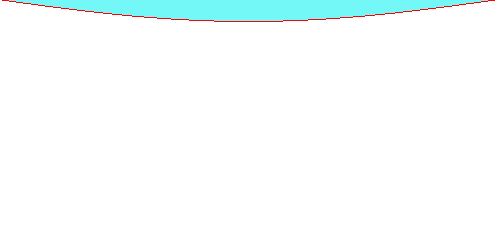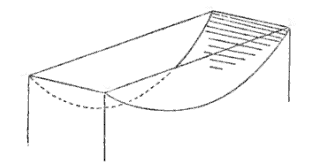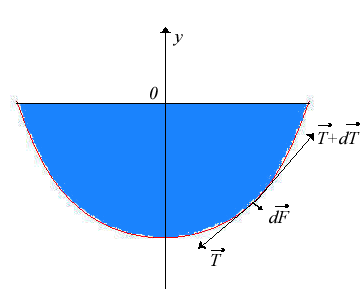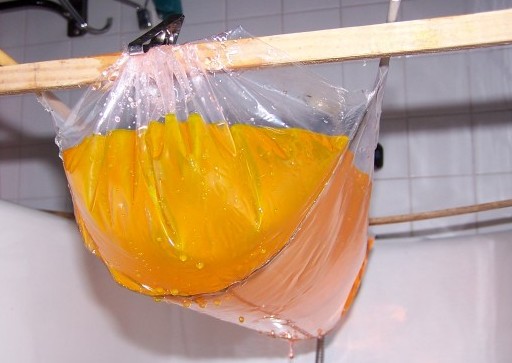LINTEARIA

| next curve | previous curve | 2D curves | 3D curves | surfaces | fractals | polyhedra |
LINTEARIA

| Problem posed and solved by Jacques Bernoulli in 1692.
He named the curve lintearia after the Latin word linteum meaning
linen cloth.
Other named proposed: tarpaulin, by analogy with the catenary. |
| The lintearia is the shape taken by the profile of a rectangular tarpaulin attached to two horizontal bars, full of water up to the two bars (two planes limit the flow of water), and placed in a uniform gravitational field. The tarpaulin is supposed to be flexible, infinitely thin, inextensible, and without proper mass. |  |

This can be simplified to ,
and, by integrating, we get
.
Therefore 
.
With ,
we get the parametrization:
,
for
, which is none other
than the elastic curve (swap
x and y).
Therefore, the lintearia is also the curve for which the curvature is proportional to the depth, result that could have been directly obtained by virtue of the Laplace law.

For 0 < k < 1, the lintearia is open, for k1 = -0.65222.....
< k < 0, it is closed; the value of k1 is the limit value corresponding
to the physical problem.
Remark: for a pressure force still proportional to y but also
to the infinitesimal length dx instead of ds, oriented towards
the bottom, i.e. ,
we would get a sinusoid.
See the dangling drop, generalisation to 3D-space of the lintearia.
Compare with the skipping rope curve.


| next curve | previous curve | 2D curves | 3D curves | surfaces | fractals | polyhedra |
© Robert FERRÉOL 2017